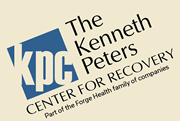FENTANYL
Fentanyl is a synthetic opioid that is up to 50 times stronger than heroin and 100 times stronger than morphine. It is a major contributor to fatal and nonfatal overdoses in the U.S.
The fentanyl that is mixed into street drugs is NOT the same as pharmacological fentanyl. Both are considered synthetic opioids. Pharmaceutical fentanyl is prescribed by doctors to treat severe pain, especially after surgery and for advanced-stage cancer.
However, most cases of fentanyl-related overdose are linked to illicitly manufactured fentanyl, which is distributed through illegal drug markets for its heroin-like effect. It is often added to other drugs because of its extreme potency, which makes drugs cheaper, more powerful, more addictive, and more dangerous.
If fentanyl is so deadly, why do drug dealers use it to lace illicit drugs?
The driving force behind a record-breaking 100,000 overdose deaths per year, fentynl is now being laced in traditional opioids like oxycodone and heroin, and increasingly, in non-opioids like cocaine and various counterfeit pills such as Xanax, Ritalin, Adderall and Oxycodone.
But with its high death rate, why would drug dealers lace drugs with fentanyl, effectively killing off their potential customers?
According to experts, there are many reasons fentanyl has become such a widely used illicit drug, despite its high overdose potential.
Done correctly, lacing illicit drugs with fentanyl often creates a return stream of customers because fentanyl is considered highly addictive. This is why fentanyl is often found in drugs like cocaine, counterfeit Xanax, counterfeit Adderall, or other drugs not classified as opioids. We are seeing it mixed in to THC compounds.
In these analogs used on the street, there is no quality control or dose consistency, hence the number of deaths.
Recognizing an opioid overdose can be difficult. If you aren’t sure, it is best to treat the situation like an overdose—you could save a life. Call 911 or seek medical care for the individual. Do not leave the person alone. Signs of an overdose may include:
- Small, constricted “pinpoint pupils”
- Falling asleep or loss of consciousness
- Slow, shallow breathing
- Choking or gurgling sounds
- Limp body
- Pale, blue, or cold skin
If someone you live with uses drugs, you should have Narcan in the home to reverse an overdose.

